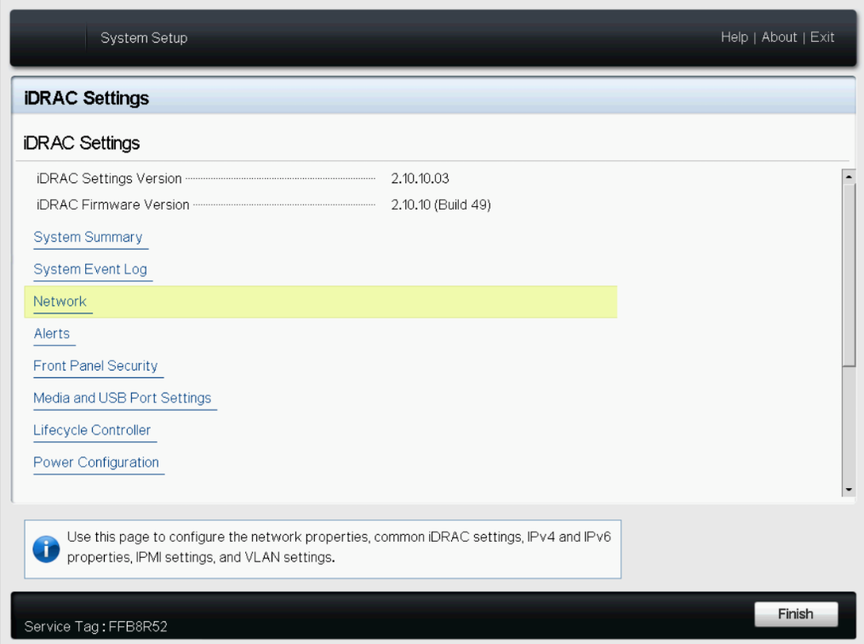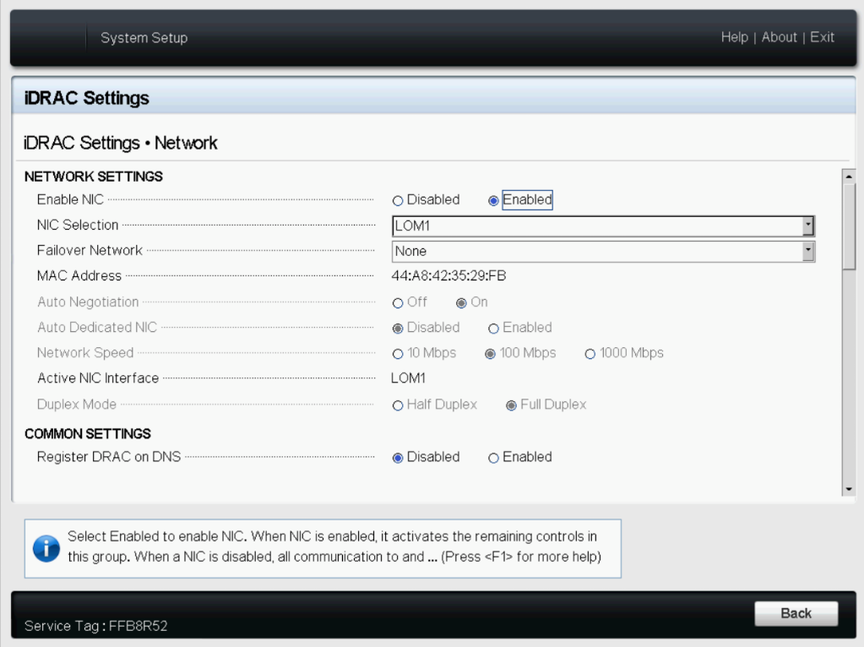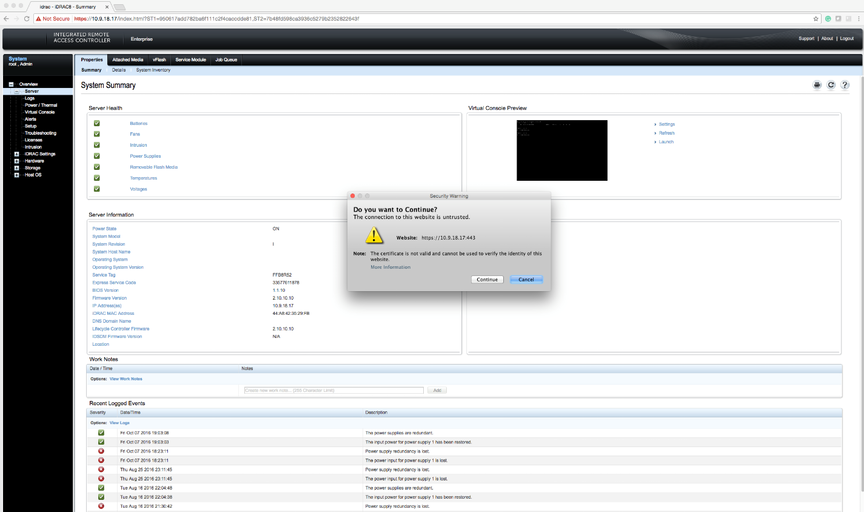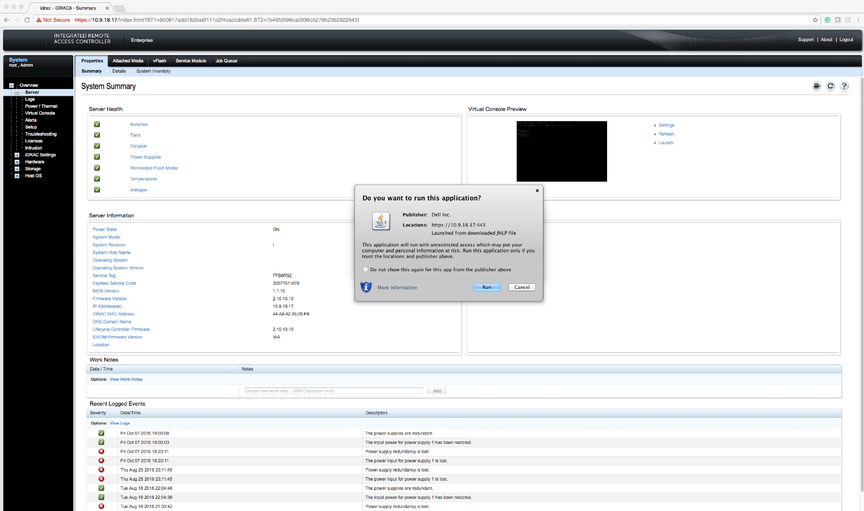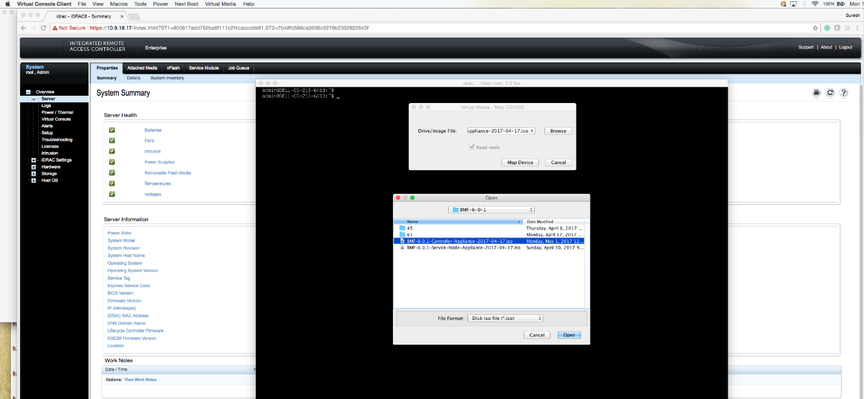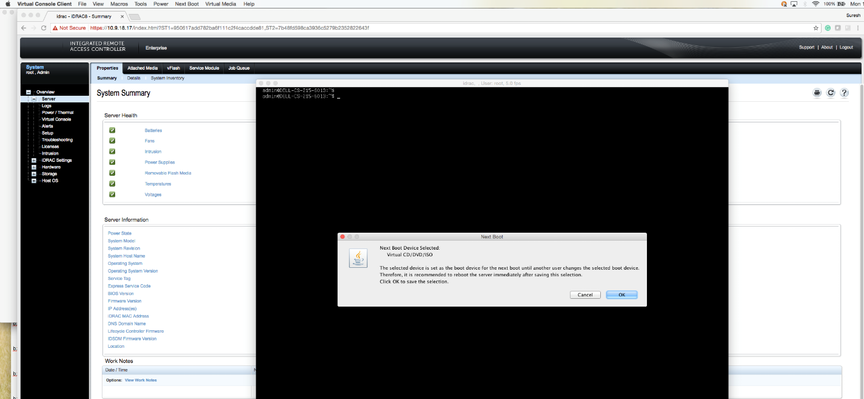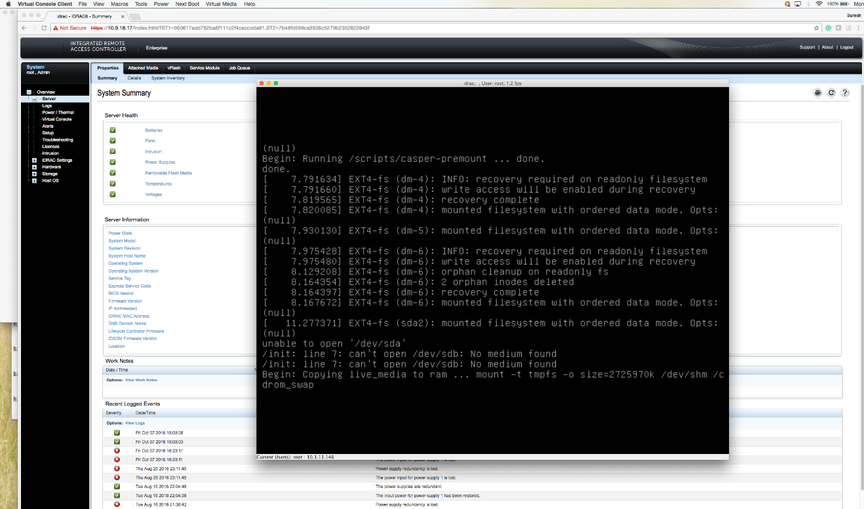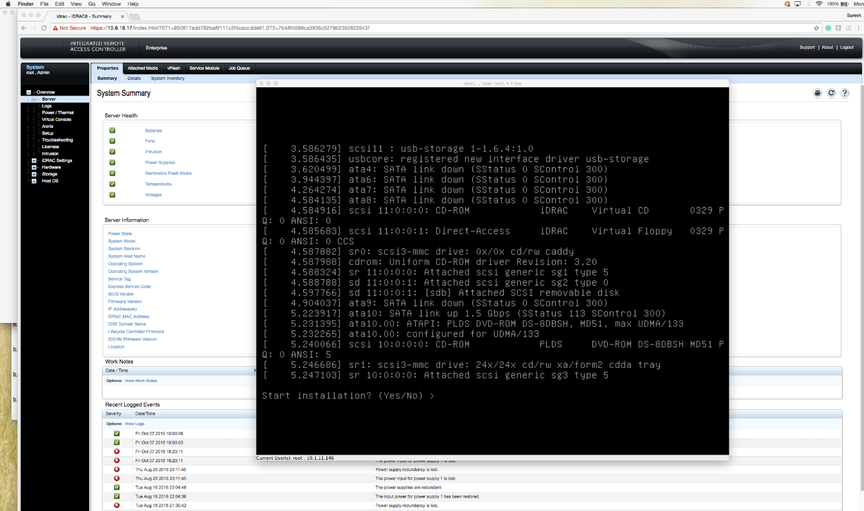Using iDRAC with a Dell R430, R630, or R730 Server
This chapter provides step-by-step instructions for using the integrated Dell Remote Access Controller (iDRAC) Enterprise Version to install the DMF Controller image on Dell R430 servers and the DMF Service Node Appliance image on Dell R630 or R730 servers.
This chapter was validated using iDRAC Enterprise Version 2.10.10 and DMF Release 6.0.1. The instructions were tested with DMF Controller Release 6.0.1 on Dell R430 and DMF Service Node Appliance Release 6.0.1 on Dell R630 or R730.
To purchase an iDRAC Enterprise license, contact Dell Sales at https://www.dell.com/learn/us/en/19/campaigns/contact-us-phone-number.
Alternatively, purchase an iDRAC Enterprise license from Dell Digital Locker (DDL). https://www.dell.com/support/kbdoc/en-us/000130349/how-to-obtain-idrac-enterprise-licenses-from-dell-digital-locker-ddl.
Setting Up and Configuring iDRAC
Procedure
Using iDRAC to Install the DMF Controller or DMF Service Node Image
After installing the Controller software image using iDRAC, follow the instructions in Installing and Configuring the DMF Controller to complete the DMF Controller installation and initial configuration.
For DMF Release 6.3.2 onwards, the procedure for using iDRAC to install the DMF Controller or DMF Service node image is the same.
Complete the following steps using iDRAC to install the DMF Controller or Service Node image on a Dell R630/R730.
Procedure


